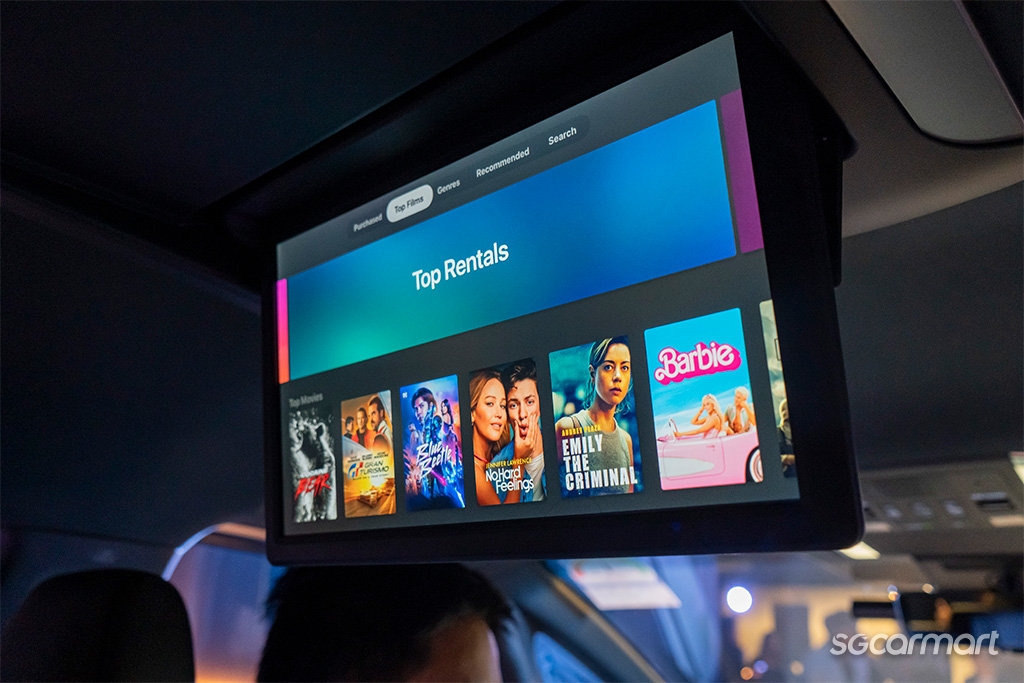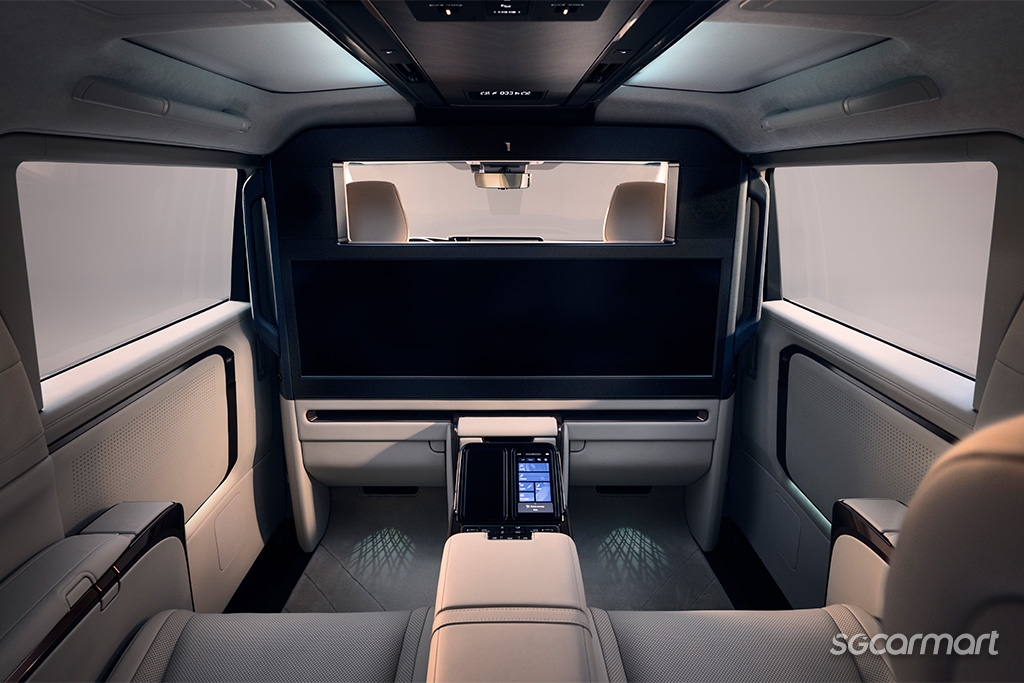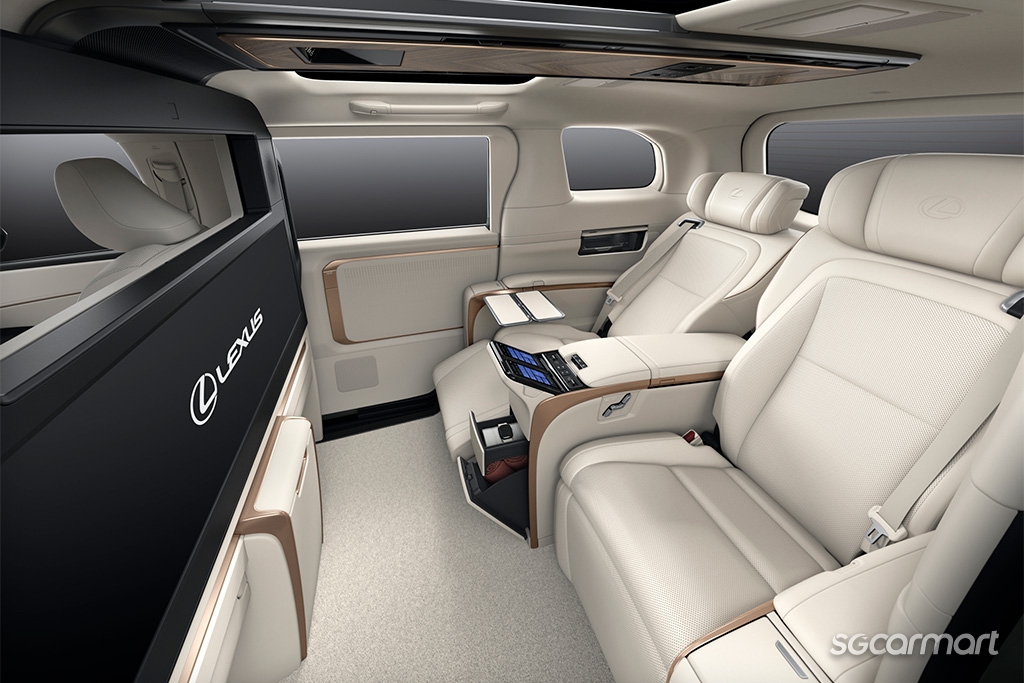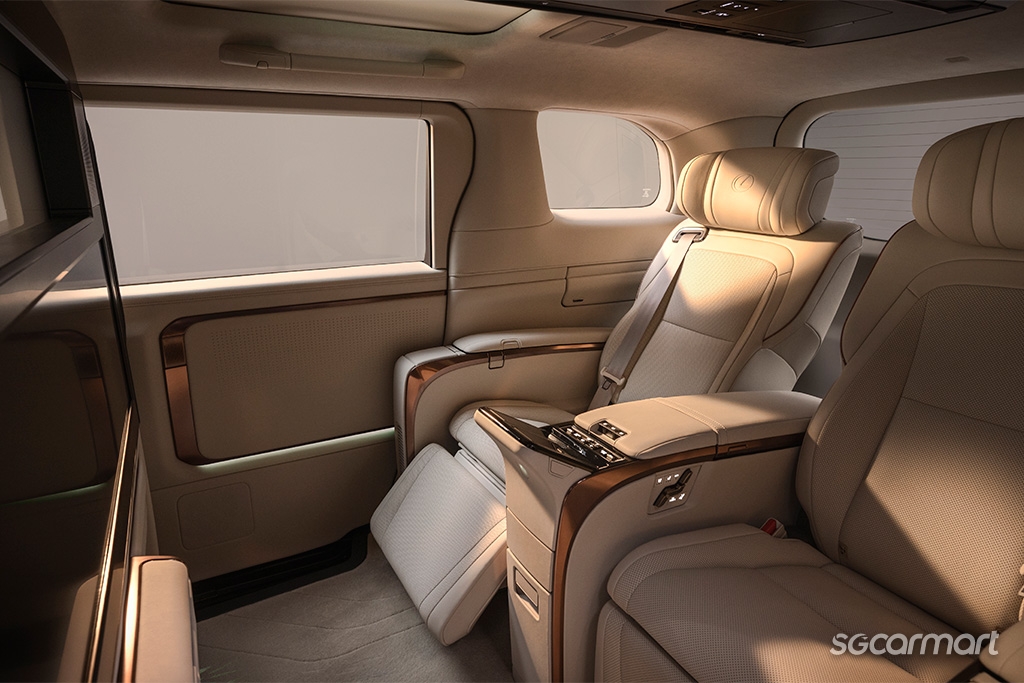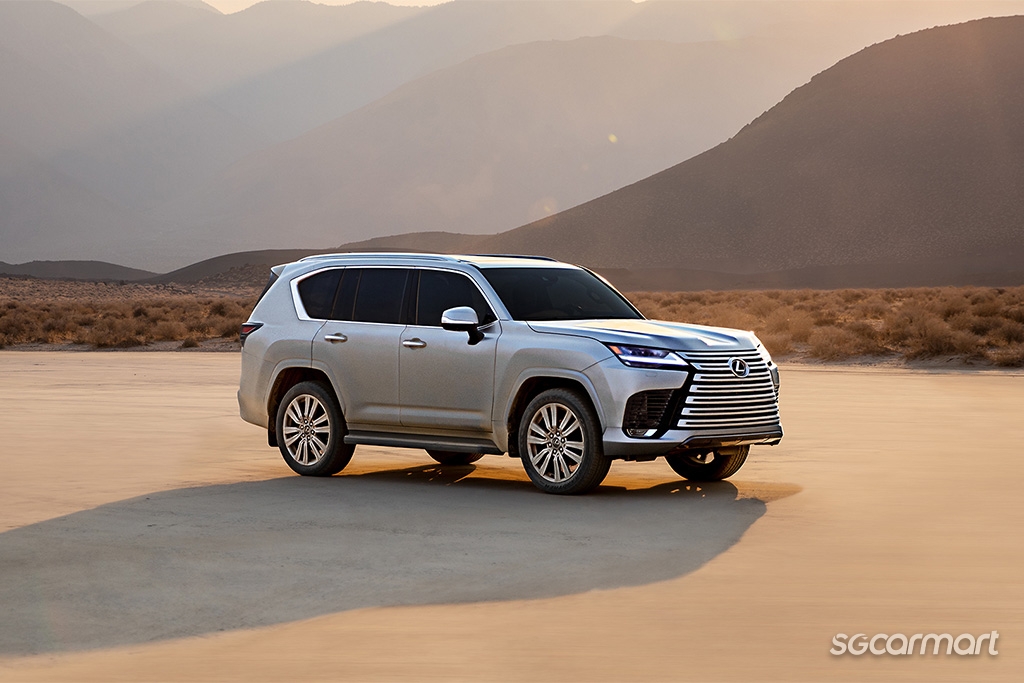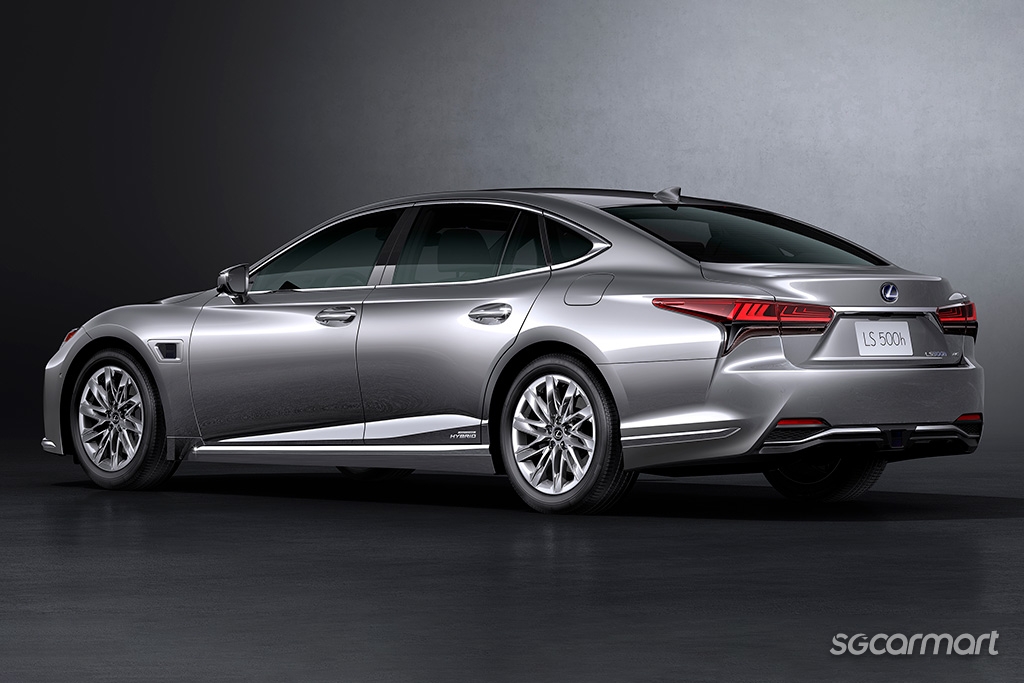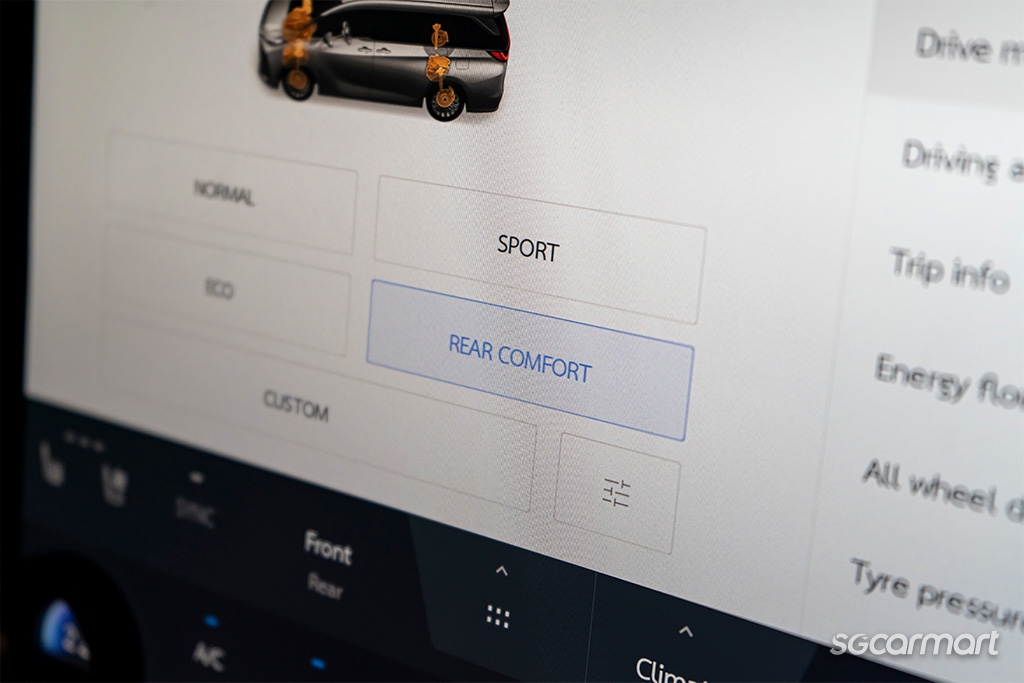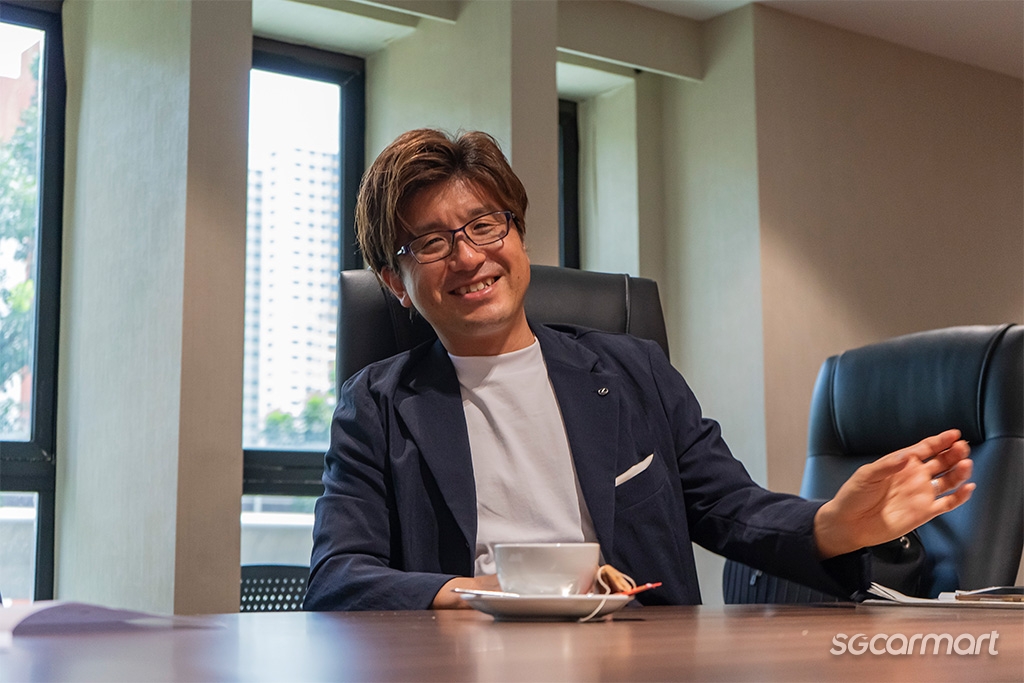With the LM, Lexus pursues a different vision of luxury
11 Oct 2023|1,814 views
Catching us off guard by suddenly switching directly to English - a rare instance in a 20-minute conversation otherwise facilitated by a Japanese-English translator - the Chief Engineer of the all-new Lexus LM makes an ostensibly sincere admission: That he is at a loss.
"I cannot choose," Mr. Takami Yokoo protests, before letting out an almost-hearty laugh under which his soft and collected demeanour thus far momentarily fades away. The question: What is his favourite part of the car? "All of them," he sheepishly insists, still in English. Even after taking a few more moments to ponder the question, the indecision lingers.
It shouldn't take more than a few glances to deduce that the Lexus LM is not your typical flagship. But before going into all that, another aspect of its ongoing 'press junket' is noteworthy, and thus to be addressed first: This is a model that Lexus is putting growing emphasis on.
Though entirely new to Singapore, the car you see is already in its second generation now; only China, Lexus' home-market of Japan, and a few other Asian countries received the model previously. Now, the all-new LM is in the midst of a far wider rollout (Europe, for instance, is also getting the car for the first time), with 60 international markets set to get it.
Putting the buzz Lexus has appeared to drum up around the model together with its unorthodox body styles makes it one of the most intriguing cars to have reached us in recent memory.
If the term "flagship MPV" doesn't roll off the tongue as naturally as "flagship SUV", it's probably because it doesn't really exist in the world of luxury motoring; even before SUVs were the rage, one announced their wealth with a flagship sedan (what we'd more traditionally associate a limousine with). Now, it's almost as if Lexus isn't just keen on breaking with convention - it wants to create a new one itself.
"I never considered the LM as having any other competitor," Mr. Yokoo coolly replies, when we ask what sorts of models he sees the LM going up against in the lineups of other luxury marques. The car's appeal, he continues, will be clear to those who prioritise one quality above all: Space.
It's hard to argue with this. Even when looking at the other flagships in-house (these, in turn, have direct rivals outside), the LS sedan might surely have the edge in driving dynamics; the LX SUV, in some level of go-anywhere ruggedness. But neither can rival the sheer head and legroom available within the LM's cavernous cabin.
It goes far beyond just large screens and the cushiest of captain's chairs - but the LM's sheer space has given Lexus free rein to build a cosseting environment for occupants that few others can rival
Even then, it's not just about the availability of space itself, but how it can be interwoven with other creature comforts for the most sublime passenger experience.
Apart from in-car screens (that don't feel shoved in your face), you'll find captain's chairs in the LM's second row boasting not just reclining and massage functions, but two types of shock absorbent materials integrated into their soft back and headrests. Lexus says special attention was paid to "stabilising body posture and reducing head movement", both of which can cause discomfort and motion sickness.
Riding first class, after all, means zero tolerance for all manner of negative sensations - crowdedness included - and in the four-seater, things are taken to even more exclusive extremes. Separated from the front quarters with a partition (which includes a retractable, dimmable glass window), rear passengers are treated to a ginormous, 48-inch screen, and on even more enhanced captain's chairs too, that can almost fully fold flat.
The four-seater variant of the LM comes with a 48-inch screen, while its enhanced rear seats can be reclined to a nearly-flat position
As expected of Lexus, the LM's different vision of luxury isn't just confined to its body style - it's also in its interior craft. Take the muted colour palettes for instance; only two colour schemes are available at launch (for the seven-seater variant), including Solis white (with copper accents) and Black (with "grey tone gradations").
Fastidious analyses, and then implementations, for both horizontal and vertical elements were made, and with them, the elimination of "excess lines, which will become visible noise". (The cabin still gets a thorough sprinkling of an intricate Yanabe herringbone wood grain textures on multiple panels throughout.)
“As a passenger sits down, what is the feeling of resting?," Mr. Yokoo invites us to ponder. "If we have a very 'luxurious' interior, the passengers will initially feel that this is very wonderful. But if it has been made to become overly magnificent and glittery, on the contrary, the passenger cannot actually calm down."
"Of the highest importance are elements that actually bring about refinement, and the feeling of refinement," Mr. Yokoo continues. "I believe that these, comparatively, can actually be quite simple."
"Not decorative," he makes sure to add.
Still, don't mistake this deceptive simplicity for a lack of effort to finetune virtually every component of the car - all towards the goal of making it the claimed "pinnacle of ride comfort".
One example is the firm's three-step approach to noise reduction - focusing on noise emitted by the car (such as its engine), keeping noise from outside it at bay, and finally, also actively remove whatever noise sneaks in, or is left inside. Complete silence can ironically cause distress, so the firm assures that this sense of quietness will still be "natural and comfortable".
Longtime fans of the brand will also know that the letter 'L' (for luxury) isn't casually thrown around by Lexus, but reserved thus far only for its aforementioned top dogs: The LS and LX. Mr. Yokoo, who served as the Chief Engineer of the LX right before helming development of the LM - as in Luxury Mover - takes this seriously too.
"What is the Lexus philosophy? And what does the L series actually represent?," he invites us to consider again when we ask what he learned from the LX. "These concepts have been built up in me in the past, and… were very useful towards the design and making of the LM."
Mr. Yokoo says that his experience as Chief Engineer of the LX (left/top) was key to helping him grasp the essence of the Lexus L series - and thus also inform his approach to crafting the LM (Lexus LS pictured on the right/bottom)
As for other prevailing trends in the space occupied by one-percenters, the firm already has its eye on the wave of customisation/individualisation possibilities sweeping the luxury world, and is keeping itself tuned in to the feedback of customers. "There may be a need for us to think in the future whether these will be done by Lexus, or by a third party as an after-market service," Mr. Yokoo suggests.
Interestingly, his answers to the separate questions of what was most difficult to implement in the car, as well as what he personally placed most emphasis on throughout development, end up being the same: Translating the "Lexus Driving Signature" into a vehicle with physical attributes quite unlike anything else in Lexus' lineup.
When asked why so much driving-emphasis has been placed on a model that will - presumably - be mostly chauffeur-driven, Mr. Yokoo is quick to note that even traditionally speaking, the Lexus Driving Signature "isn't a sporty one".
Rather, the focus has always been on the perhaps less tangible quality of "driving as if in dialogue with the car".
Arguably one of the most fascinating features on the LM is an all-new "Rear Comfort" drive mode, which relies on also-new suspension technology to prioritise comfort for rear-seat passengers. "If a driver in front is especially concerned about this [the comfort of the passengers], the people behind will know the extra effort that he has put into driving, because it is transmitted to the passengers," Mr. Yokoo notes.
"And so we have developed a vehicle that is, although chaffeur-driven, also comfortable to drive… so that the passengers benefit." Between the two, Mr. Yokoo foresees that the seven-seater could win over more owner-drivers ("family-oriented individuals, who drive their families around"); he is unambiguous that the four-seater will be chauffeur-driven.
To our surprise - with this being his first trip ever to Singapore - he is also first to note the immense popularity of the Toyota Alphard on our roads. The LM "could similarly be used like a limousine," he proffers, apparently confident that the local market is already hungry for ultra-luxe MPVs.
Against inevitable comparisons between the Alphard/Vellfire twins and the LM, he is unruffled in his insistence that the latter is its own car. "We have never considered the LM in the light of how the Alphard has been, and how the LM should then become," he calmly responds through the interpreter.
Whether or not the average person is convinced by the distinction between the models truly doesn't matter, since they're likely unable to judge for themselves. Even the seven-seater launches with a half-a-million-dollar price tag (before COE), while prices for the more sumptuous four-seater are set to start even higher, when it eventually arrives next year.
Still, there is an inexplicable intensity to the conviction with which Mr. Yokoo speaks of the LM that makes it hard to belittle his faith in the model as a true-blue "Lexus flagship MPV".
To return to the first question, he had gone on to give a slightly lengthier explanation eventually even while remaining non-committal about what he liked best about the car. "Cars are not judged not solely by their external looks, nor by the interior alone, or by the way they drive. So as far as the LM is concerned, everything is my favourite."
It is this holistic perspective that the Chief Engineer appears convinced by as he stands steadfastly by his declaration that this car is "a Lexus machine; a Lexus vehicle, very much with the Lexus signature refinement and comfort". We're guessing the few lucky ones - whose hands the LM will eventually come into - will understand too.
Here are a few other stories that may interest you!
Lexus RX vs RZ: Tale of two electri-cities
Catching us off guard by suddenly switching directly to English - a rare instance in a 20-minute conversation otherwise facilitated by a Japanese-English translator - the Chief Engineer of the all-new Lexus LM makes an ostensibly sincere admission: That he is at a loss.
"I cannot choose," Mr. Takami Yokoo protests, before letting out an almost-hearty laugh under which his soft and collected demeanour thus far momentarily fades away. The question: What is his favourite part of the car? "All of them," he sheepishly insists, still in English. Even after taking a few more moments to ponder the question, the indecision lingers.
It shouldn't take more than a few glances to deduce that the Lexus LM is not your typical flagship. But before going into all that, another aspect of its ongoing 'press junket' is noteworthy, and thus to be addressed first: This is a model that Lexus is putting growing emphasis on.
Though entirely new to Singapore, the car you see is already in its second generation now; only China, Lexus' home-market of Japan, and a few other Asian countries received the model previously. Now, the all-new LM is in the midst of a far wider rollout (Europe, for instance, is also getting the car for the first time), with 60 international markets set to get it.
Putting the buzz Lexus has appeared to drum up around the model together with its unorthodox body styles makes it one of the most intriguing cars to have reached us in recent memory.
If the term "flagship MPV" doesn't roll off the tongue as naturally as "flagship SUV", it's probably because it doesn't really exist in the world of luxury motoring; even before SUVs were the rage, one announced their wealth with a flagship sedan (what we'd more traditionally associate a limousine with). Now, it's almost as if Lexus isn't just keen on breaking with convention - it wants to create a new one itself.
"I never considered the LM as having any other competitor," Mr. Yokoo coolly replies, when we ask what sorts of models he sees the LM going up against in the lineups of other luxury marques. The car's appeal, he continues, will be clear to those who prioritise one quality above all: Space.
It's hard to argue with this. Even when looking at the other flagships in-house (these, in turn, have direct rivals outside), the LS sedan might surely have the edge in driving dynamics; the LX SUV, in some level of go-anywhere ruggedness. But neither can rival the sheer head and legroom available within the LM's cavernous cabin.
It goes far beyond just large screens and the cushiest of captain's chairs - but the LM's sheer space has given Lexus free rein to build a cosseting environment for occupants that few others can rival
Even then, it's not just about the availability of space itself, but how it can be interwoven with other creature comforts for the most sublime passenger experience.
Apart from in-car screens (that don't feel shoved in your face), you'll find captain's chairs in the LM's second row boasting not just reclining and massage functions, but two types of shock absorbent materials integrated into their soft back and headrests. Lexus says special attention was paid to "stabilising body posture and reducing head movement", both of which can cause discomfort and motion sickness.
Riding first class, after all, means zero tolerance for all manner of negative sensations - crowdedness included - and in the four-seater, things are taken to even more exclusive extremes. Separated from the front quarters with a partition (which includes a retractable, dimmable glass window), rear passengers are treated to a ginormous, 48-inch screen, and on even more enhanced captain's chairs too, that can almost fully fold flat.
The four-seater variant of the LM comes with a 48-inch screen, while its enhanced rear seats can be reclined to a nearly-flat position
As expected of Lexus, the LM's different vision of luxury isn't just confined to its body style - it's also in its interior craft. Take the muted colour palettes for instance; only two colour schemes are available at launch (for the seven-seater variant), including Solis white (with copper accents) and Black (with "grey tone gradations").
Fastidious analyses, and then implementations, for both horizontal and vertical elements were made, and with them, the elimination of "excess lines, which will become visible noise". (The cabin still gets a thorough sprinkling of an intricate Yanabe herringbone wood grain textures on multiple panels throughout.)
“As a passenger sits down, what is the feeling of resting?," Mr. Yokoo invites us to ponder. "If we have a very 'luxurious' interior, the passengers will initially feel that this is very wonderful. But if it has been made to become overly magnificent and glittery, on the contrary, the passenger cannot actually calm down."
"Of the highest importance are elements that actually bring about refinement, and the feeling of refinement," Mr. Yokoo continues. "I believe that these, comparatively, can actually be quite simple."
"Not decorative," he makes sure to add.
Still, don't mistake this deceptive simplicity for a lack of effort to finetune virtually every component of the car - all towards the goal of making it the claimed "pinnacle of ride comfort".
One example is the firm's three-step approach to noise reduction - focusing on noise emitted by the car (such as its engine), keeping noise from outside it at bay, and finally, also actively remove whatever noise sneaks in, or is left inside. Complete silence can ironically cause distress, so the firm assures that this sense of quietness will still be "natural and comfortable".
Longtime fans of the brand will also know that the letter 'L' (for luxury) isn't casually thrown around by Lexus, but reserved thus far only for its aforementioned top dogs: The LS and LX. Mr. Yokoo, who served as the Chief Engineer of the LX right before helming development of the LM - as in Luxury Mover - takes this seriously too.
"What is the Lexus philosophy? And what does the L series actually represent?," he invites us to consider again when we ask what he learned from the LX. "These concepts have been built up in me in the past, and… were very useful towards the design and making of the LM."
Mr. Yokoo says that his experience as Chief Engineer of the LX (left/top) was key to helping him grasp the essence of the Lexus L series - and thus also inform his approach to crafting the LM (Lexus LS pictured on the right/bottom)
As for other prevailing trends in the space occupied by one-percenters, the firm already has its eye on the wave of customisation/individualisation possibilities sweeping the luxury world, and is keeping itself tuned in to the feedback of customers. "There may be a need for us to think in the future whether these will be done by Lexus, or by a third party as an after-market service," Mr. Yokoo suggests.
Interestingly, his answers to the separate questions of what was most difficult to implement in the car, as well as what he personally placed most emphasis on throughout development, end up being the same: Translating the "Lexus Driving Signature" into a vehicle with physical attributes quite unlike anything else in Lexus' lineup.
When asked why so much driving-emphasis has been placed on a model that will - presumably - be mostly chauffeur-driven, Mr. Yokoo is quick to note that even traditionally speaking, the Lexus Driving Signature "isn't a sporty one".
Rather, the focus has always been on the perhaps less tangible quality of "driving as if in dialogue with the car".
Arguably one of the most fascinating features on the LM is an all-new "Rear Comfort" drive mode, which relies on also-new suspension technology to prioritise comfort for rear-seat passengers. "If a driver in front is especially concerned about this [the comfort of the passengers], the people behind will know the extra effort that he has put into driving, because it is transmitted to the passengers," Mr. Yokoo notes.
"And so we have developed a vehicle that is, although chaffeur-driven, also comfortable to drive… so that the passengers benefit." Between the two, Mr. Yokoo foresees that the seven-seater could win over more owner-drivers ("family-oriented individuals, who drive their families around"); he is unambiguous that the four-seater will be chauffeur-driven.
To our surprise - with this being his first trip ever to Singapore - he is also first to note the immense popularity of the Toyota Alphard on our roads. The LM "could similarly be used like a limousine," he proffers, apparently confident that the local market is already hungry for ultra-luxe MPVs.
Against inevitable comparisons between the Alphard/Vellfire twins and the LM, he is unruffled in his insistence that the latter is its own car. "We have never considered the LM in the light of how the Alphard has been, and how the LM should then become," he calmly responds through the interpreter.
Whether or not the average person is convinced by the distinction between the models truly doesn't matter, since they're likely unable to judge for themselves. Even the seven-seater launches with a half-a-million-dollar price tag (before COE), while prices for the more sumptuous four-seater are set to start even higher, when it eventually arrives next year.
Still, there is an inexplicable intensity to the conviction with which Mr. Yokoo speaks of the LM that makes it hard to belittle his faith in the model as a true-blue "Lexus flagship MPV".
To return to the first question, he had gone on to give a slightly lengthier explanation eventually even while remaining non-committal about what he liked best about the car. "Cars are not judged not solely by their external looks, nor by the interior alone, or by the way they drive. So as far as the LM is concerned, everything is my favourite."
It is this holistic perspective that the Chief Engineer appears convinced by as he stands steadfastly by his declaration that this car is "a Lexus machine; a Lexus vehicle, very much with the Lexus signature refinement and comfort". We're guessing the few lucky ones - whose hands the LM will eventually come into - will understand too.
Here are a few other stories that may interest you!
Lexus RX vs RZ: Tale of two electri-cities
Thank You For Your Subscription.





























